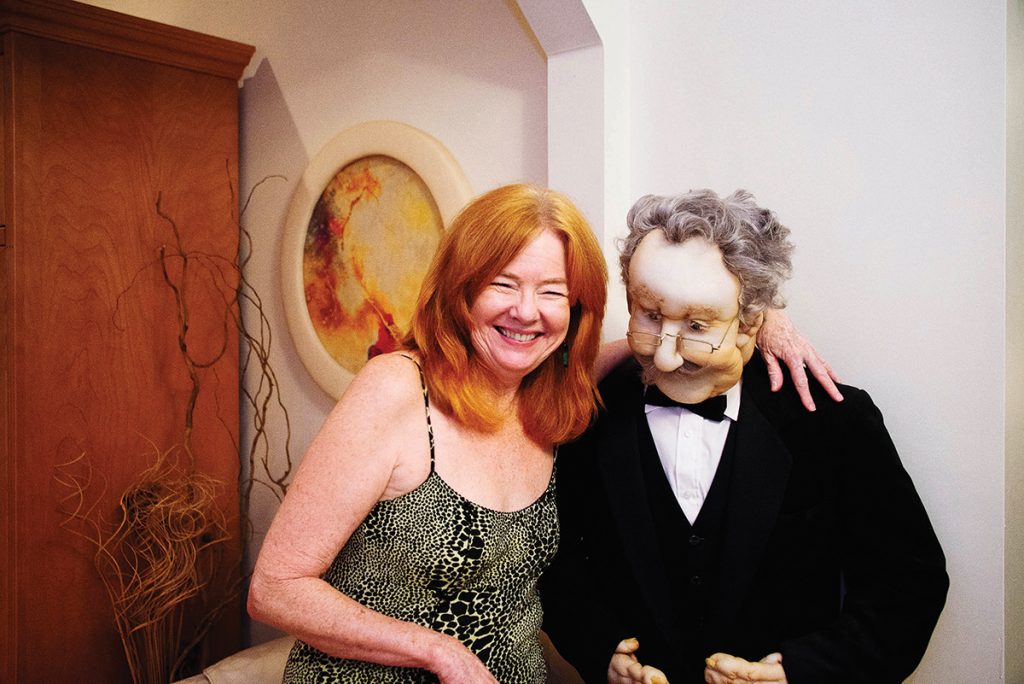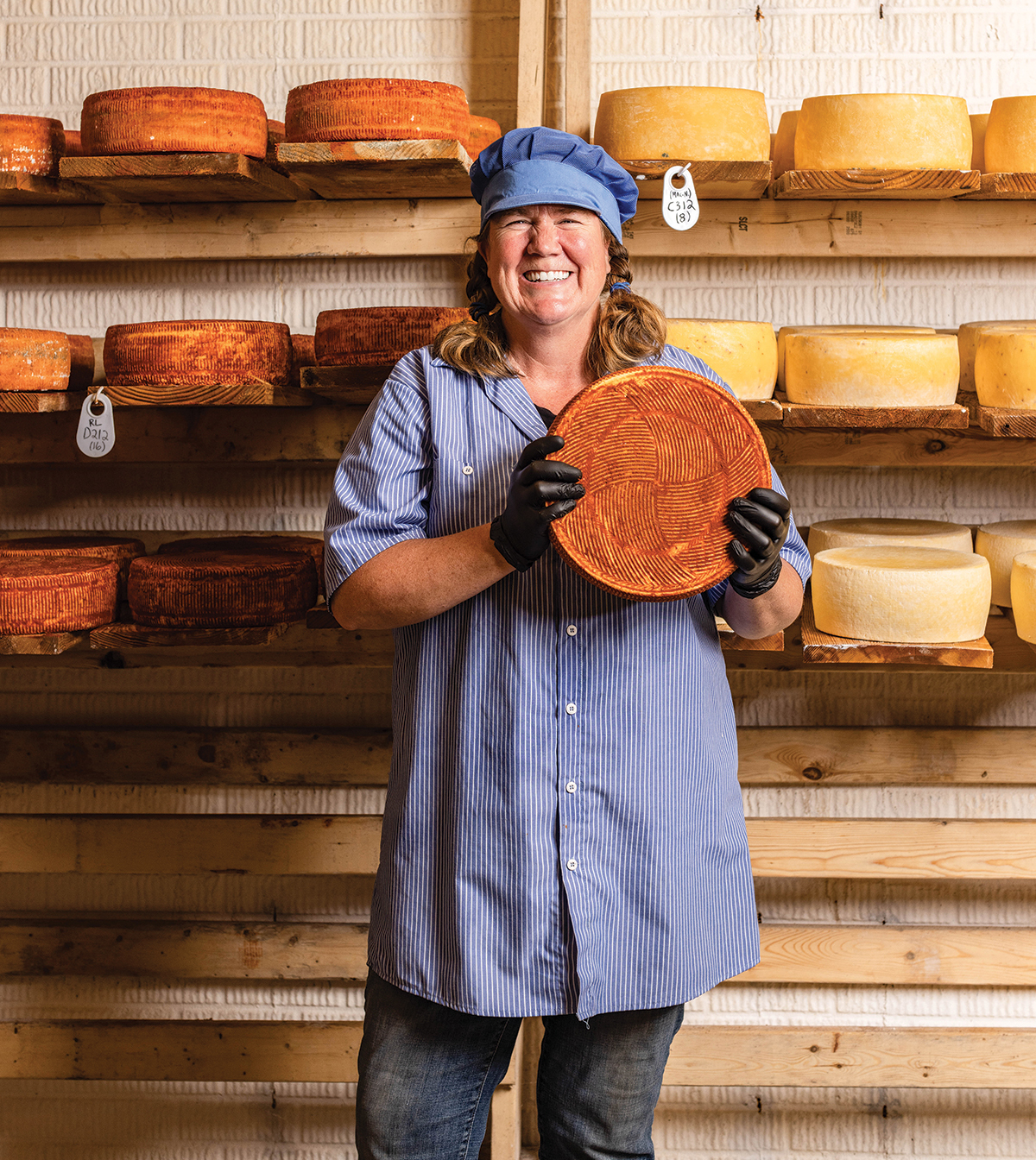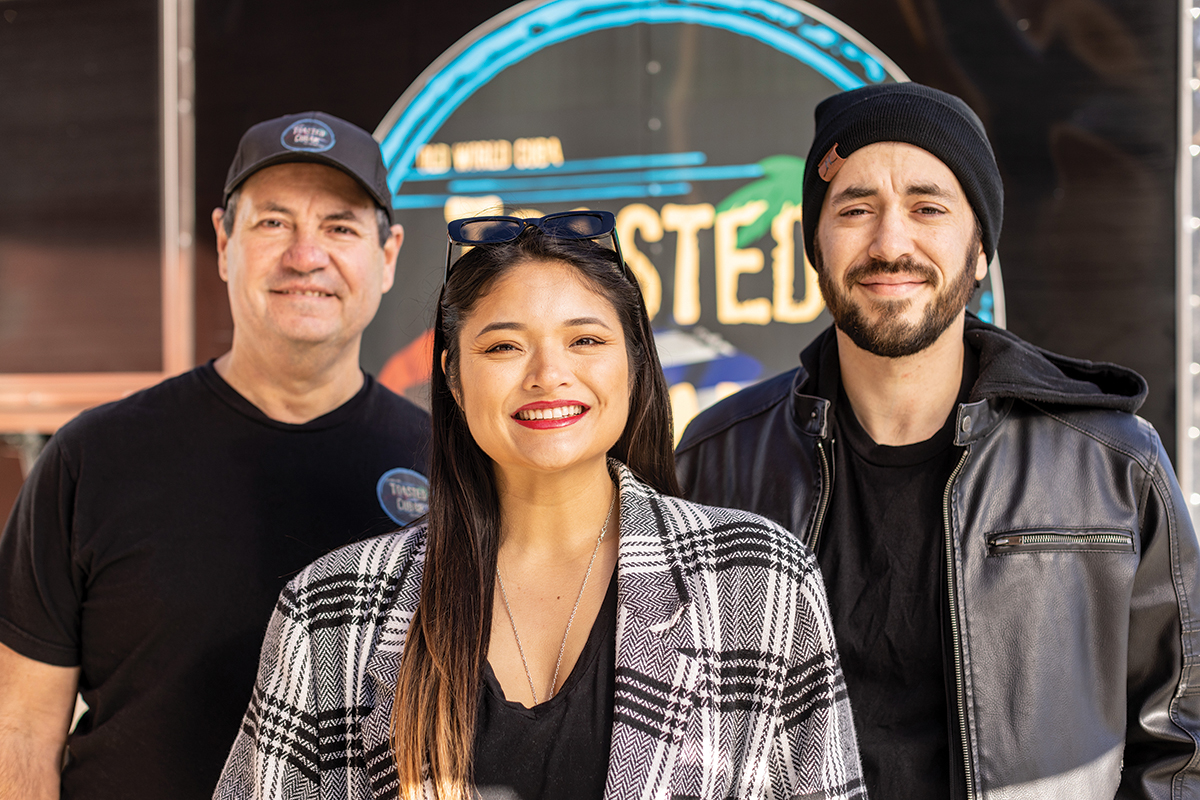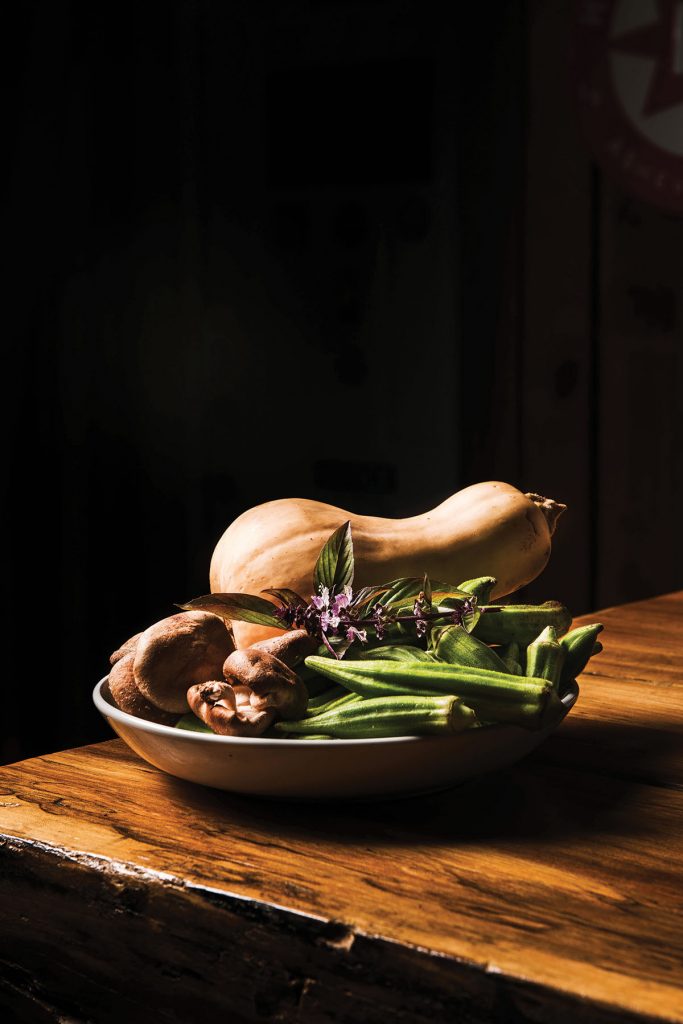Silk painter adheres to precise Japanese techniques

Barbara Thomas poses with a soft-sculpture friend, made by a Canadian artist.
Portrait by Erin Fowler
In swirls and streams of color, Columbus artist Barbara Thomas’ silk paintings bring together the spontaneity of the abstract with the discipline of traditional Asian art forms, particularly Japanese ink painting. Her mother was widely known for her work in Sumi-E, or black ink, painting, and Thomas continued the tradition during her seven years studying the technique with Japanese artist Ann Kobayashi. “There’s a simplicity to the brush painting that is different than Western watercolors,” Thomas says. “The idea is to create an impression of what you’re painting, and not clutter it with a lot of details.”
The technique seemed a congenial companion to her developing career as a graphic designer. Both creative outlets demanded close attention to the use of blank space as a compositional element to complement the emotional texture supplied by color. But while studying at New York’s Parsons School of Design and at the city’s School Of Visual Arts, Thomas discovered a way to combine her love of color with the techniques of brush painting when an art instructor encouraged her to experiment with fabric. She had found her niche.

She uses silk paint, a kind of thinned acrylic, and traditional French dyes. “I prefer to use the dyes on things like scarves and clothing,” Thomas says. “They leave a slightly stiffer feel to the fabric, and the colors are a bit more vibrant. They need to be steam set, and that procedure brightens the colors, too.” The dyes can be worked like watercolor but pop with the deep, rich colors of oil or acrylic paint.
Whether using dyes or paint, working with silk can be a challenging process. “The silk needs to be stretched out on a frame while it’s damp,” Thomas explains. “It has to be very tight in order to paint on it.” Nor can the artist entirely control how the paint flows onto the fabric — thus she produces an abstract work of art on its own terms.

“I sometimes sketch out the designs, but most of the time the idea evolves intuitively. I really prefer to work that way because it allows me a lot more freedom of expression.”
She may start by pouring the paint, but shifts to brushing and layering, even thickening some sections for added depth, shaping each piece with the vertically held brush of traditional Japanese technique. “You lift and lower your whole arm in order to get thick and thin strokes,” Thomas explains. “You don’t scrub the brush, and it should be formed back into a point while it’s still wet when you’re finished painting.”

Along with her signature silk work, Thomas also paints on cotton, linen, and rice paper, the latter a perfect ground for hand-painted collage, which she sometimes frames for use as a luminary; it can also be formed into rice-paper bowls. “I love variety, so moving from one medium to another satisfies my need for diversity,” she says. Stitched fabric can add another textural layer to a work, along with beads, small stones, or wood and metal elements.
Although Thomas had been painting for years before moving to the mountains 17 years ago from New Jersey, where she ran her own gallery, she feels the more dramatic landscape has intensified her work and strengthened her love for the barely controlled, restless flow and rush of color. “It expresses the process of the changes that inevitably form the paths our lives take — how we adjust to those changes, and how they ultimately cause us to find new ways of adapting.”
Barbara Thomas, Columbus. Thomas is represented by Tryon Painters & Sculptors, 78 North Trade St., 828-859-0141. For more information, see tryonpaintersandsculptors.com.



